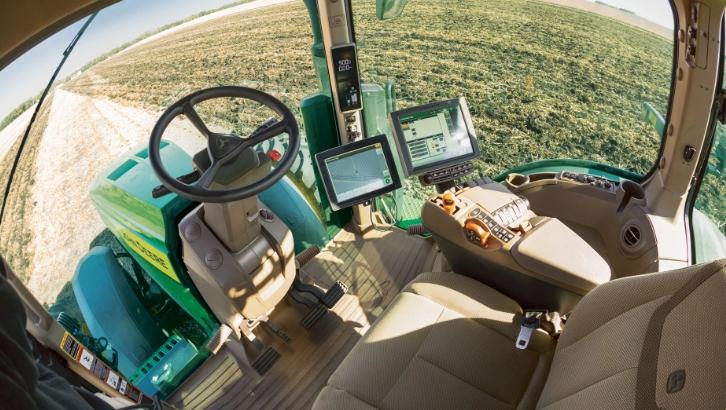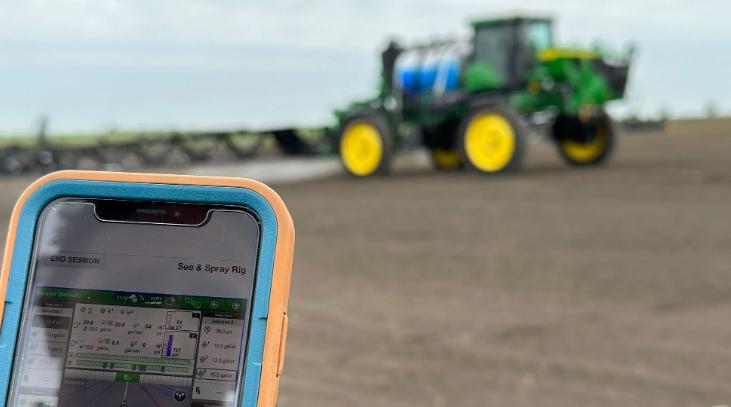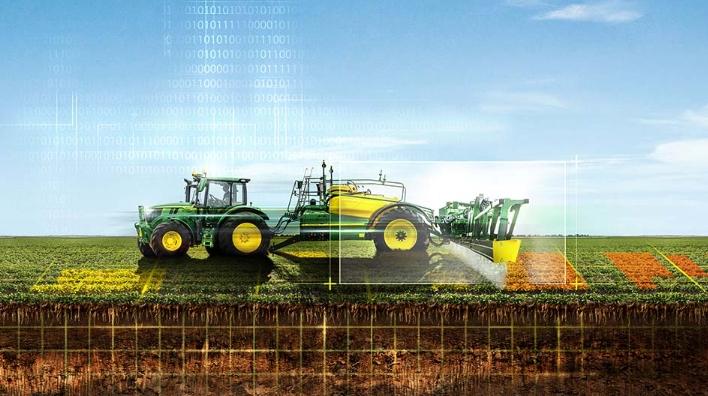Additionally, stay up-to-date with the developments related to farmers’ access to repair their heavy machinery
The automotive industry frequently uses buzzwords like autonomy, artificial intelligence, electrification, and carbon fiber. These are popular topics because manufacturers strive to gain a competitive advantage while balancing cost and demand. What’s surprising is that John Deere, a 180-year-old agriculture equipment company, also heavily incorporates these technologies, albeit in 15-ton farm vehicles.
John Deere’s commitment to technology and autonomy may seem out of place for those outside the industry, but the company’s Chief Technology Officer Jahmy Hindman revealed a few years ago that they have more software engineers than mechanical engineers on their team. This shows just how much the 180-year-old agriculture equipment giant has embraced the latest technologies.
According to John Deere’s chief technology officer Jahmy Hindman, it’s easy to overlook the extent of technology used in the agricultural industry, particularly in modern farms. These farms are adopting advanced technology, such as computer vision, machine learning, Global Navigation Satellite System guidance, automation, and autonomy, to make agriculture more efficient, sustainable, and profitable. Hindman explained to PopSci that the industry has evolved significantly in the last few decades. Here’s a closer look at how John Deere is integrating these technologies into their equipment.
Where it started—and where it’s going

John Deere, the founder of the agricultural equipment company, started as a blacksmith. Upon moving to Illinois from Vermont, he noticed that farmers were struggling with cast-iron plows due to sticky soil clinging to them, causing inefficiencies. In 1837, Deere created the first commercially successful self-scouring steel plow using a broken saw blade. The polished steel surface cut through dirt quickly and efficiently, leading to a new business for Deere. Today, over 180 years later, John Deere is still finding innovative ways to enhance the farming process.
The agriculture industry heavily relies on data to make informed decisions, and modern farms are no longer dependent on traditional methods like almanacs and notebooks. With the help of technology, data analysis drives every aspect of farm operations, and profitability is often determined by the accuracy of this data. John Deere, along with competitors such as Caterpillar and Mahindra, provides software to help farmers collect and analyze data from their farm equipment.
As technology becomes more prevalent in farming communities across the globe, agricultural producers are seeking ways to make their operations more efficient. John Deere is contributing to this effort by planning to introduce 20 or more electric and hybrid-electric construction equipment models by 2026. Furthermore, the company is striving to enhance its autonomous software to enable its large vehicles to plant, maintain, and harvest all 10 trillion corn and soybean seeds autonomously by 2030.
Farming goes electric

John Deere recently released its first all-electric zero-turn lawn mower, the Z370R Electric ZTrak, which can turn around in place without needing a wide circle. In contrast to noisy and challenging-to-start mowers of the past, this electric model runs quietly and can be charged using a USB-C port. The integrated battery is sealed, allowing for mowing even in wet and rainy conditions.
John Deere has set ambitious goals to reduce greenhouse gas emissions and is pursuing all-electric equipment. The company plans to reduce its emissions by 50 percent by 2030 from a 2021 baseline. To accelerate its electric vehicle business, John Deere acquired Kreisel Electric, an Austrian company that specializes in immersion-cooled battery technology, in early 2022. Kreisel’s modular battery design is suitable for various sizes of farm equipment and offers extended battery life, stable mechanical operation, and high efficiency in different climate conditions.
John Deere is taking a cautious approach to EV and autonomous technology, recognizing that not all farmers are ready for such advanced options. The company still offers lower-tech solutions for those who are not interested in the latest technology. This is because farm equipment can last for a long time, and introducing new technology to an uninterested operation may not be the best approach to adoption. Instead, the company actively seeks out farmers who are willing to try new products and software to test how it performs in the real world. It is worth noting that the farms pay for the use of the machines, and John Deere provides support.
According to Hindman, John Deere prioritizes delivering value to farmers with its products. One such product is See and Spray, which was acquired from Blue River Technology and launched in 2020. This software uses AI and machine learning to differentiate crop plants from weeds, enabling farmers to save money by avoiding unnecessary use of chemicals. See and Spray features an auto-leveling carbon fiber boom and dual nozzles, which can apply two different chemicals in one pass.
According to the company, John Deere’s ExactShot technology can reduce the amount of starter fertilizer required during planting by over 60%. This technology employs a blend of sensors and robotics to apply a spritz of fertilizer to each seed during planting rather than spraying the entire row. This results in significant savings for farmers in terms of both money and resources.
Right to Repair brings victory

Farm equipment can be extremely expensive, with a single machine designed for farmland costing hundreds of thousands of dollars. In the past, if equipment broke down, farmers would have to contact John Deere or an authorized repair shop and wait for a technician to arrive. This was particularly difficult for farmers located far away from city centers, who may have needed a quick fix during a busy planting or harvest season.
Earlier this year, John Deere and the American Farm Bureau Federation signed a memorandum of understanding to provide farmers and independent repair shops with access to John Deere’s software, manuals, and other necessary information to service their equipment. This has been a contentious issue for farmers, and in Colorado, a new law has been passed establishing the right to repair, effective from January 1 of next year.
John Deere warns that providing access to its equipment information and software carries certain risks. The company highlights that its machines are not small and portable like cell phones, nor do they consist of just a few parts. For instance, its combines can weigh more than 15 tons and contain over 18,500 components.
John Deere expressed its stance on the right to repair in a statement to DTN, stating that it supports customers’ decision to repair their own equipment or seek assistance from an independent repair service or an authorized dealer. The company also provides manuals, parts, and diagnostic tools to facilitate maintenance and repairs. John Deere, however, believes that the recently passed legislation in Colorado is unnecessary and may have unintended consequences that could negatively affect its customers.
According to John Deere, modifying the software of heavy machinery could put people at risk by overriding safety controls and compromising emissions compliance and data security. While the company supports customers’ decision to repair their own products, it warns of the potential risks related to safe operation of the machine. There is a delicate balance between giving farmers control over their investments and ensuring the safety of all who come in contact with the machinery. However, this risk is present in any piece of machinery, even a car.
Since the time of the first saw blade plow built by John Deere in 1837, farming machinery has undergone significant technological advancements. With machine learning, modern equipment can detect buildup and make necessary adjustments without stopping the process. In autonomous mode, tractors can measure wheel slip and speed, torque, and tire pressure, which enables farmers to achieve greater productivity in less time.
Technology is expected to play a crucial role in reducing waste and emissions, as well as improving the quality of life in farming. John Deere’s demo farm in Texas showcases the advancements in equipment technology, which are often overlooked. From detecting build-up and adjusting depth without halting the process to measuring wheel slip, speed, torque, and tire pressure in autonomous mode, modern farming machinery is equipped with machine learning and artificial intelligence that enable farmers to do more in less time.



